|
Space anomalies
|
|
| Himself | Date: Friday, 19.02.2016, 02:43 | Message # 466 |
|
Astronaut
Group: Users
 United States
United States
Messages: 45
Status: Offline
| A few odd things.
First off is this planet for which a blue star about 4.4 ly away is the brightest object in the sky (-12.27), even brighter than its own three suns combined (-11.84).

Next up is this planet, which orbits a brown dwarf that does not emit any visible light. Instead the planet gets all of its light from the brown dwarf's companion yellow dwarf. Somehow it has life.
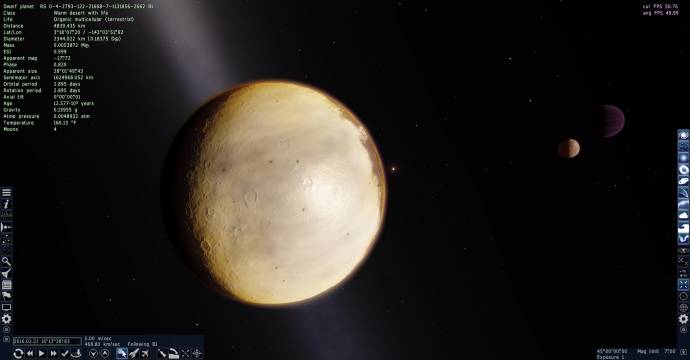
Finally there is this star, which spins so fast that its equatorial gravity is negative. Wouldn't the gasses at the equator get flung away from it?
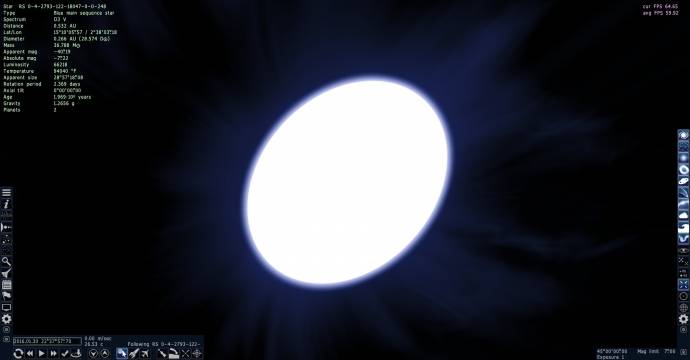
|
| |
| |
| Alek | Date: Friday, 19.02.2016, 03:11 | Message # 467 |
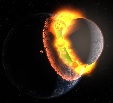 Pioneer
Group: Users
 United States
United States
Messages: 326
Status: Offline
| Quote Himself (  ) equatorial gravity is negative
For one thing, as far as I know, this is impossible, the lowest it could be for any object is 0 (though correct me if I'm wrong) but yes, if it somehow had negative equatorial gravity then it would indeed slowly throw off it's gasses (or quickly, depending on how negative it is)
Living among the stars, I find my way. I grow in strength through knowledge of the space I occupy, until I become the ruler of my own interstellar empire of sorts. Though The world was made for the day, I was made for the night, and thus, the universe itself is within my destiny.
|
| |
| |
| Roswell | Date: Friday, 19.02.2016, 15:17 | Message # 468 |
 Pioneer
Group: Users
 Canada
Canada
Messages: 500
Status: Offline
| I saw this planat with pink atmosphere O_O
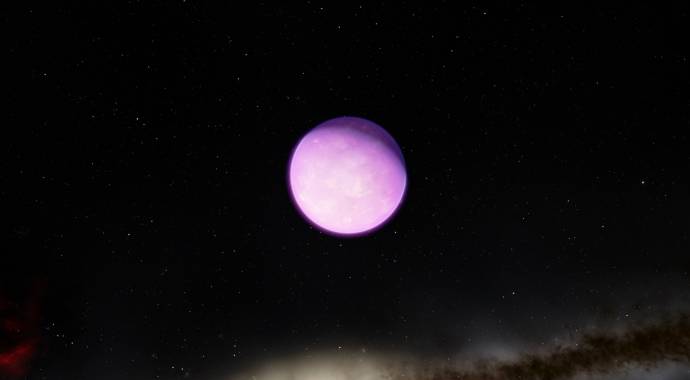
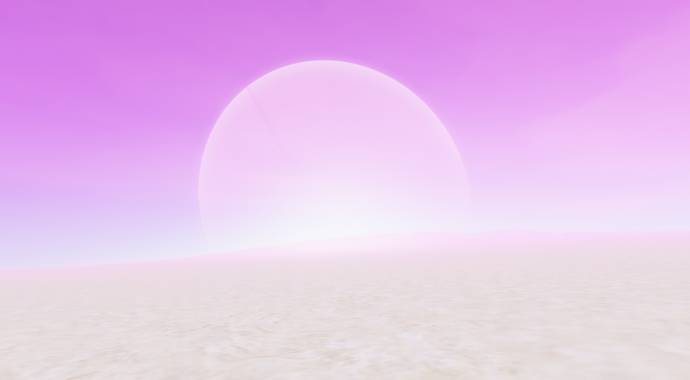
|
| |
| |
| parameciumkid | Date: Friday, 19.02.2016, 16:18 | Message # 469 |
 Explorer
Group: Users
 United States
United States
Messages: 277
Status: Offline
| Sorry to burst your bubble, but pink atmospheres are pretty common in SE these days. Anyway, here's a double white dwarf, with a bonus accretion disk:

And this planet here has a very interesting situation going on with its large, but light moon: due to tidal heating, it has a surface temperature over 1000K, giving it glowing red clouds which combined with its reflected light provides so much planetshine that, with the planet tidally locked to it, one side of the planet almost never actually experiences night - rather a "normal day" when the sun illuminates it and a "red day" when the moon illuminates it almost as brightly. When the moon is new (and particularly during solar eclipses), the entire day side of the planet gets tinted bright red.


Intel HD Graphics 4000 ;P
Edited by parameciumkid - Friday, 19.02.2016, 16:24 |
| |
| |
| Roswell | Date: Friday, 19.02.2016, 16:30 | Message # 470 |
 Pioneer
Group: Users
 Canada
Canada
Messages: 500
Status: Offline
| I'm sorry I don't know if it's rare but I search lol
|
| |
| |
| Alek | Date: Friday, 19.02.2016, 18:42 | Message # 471 |
 Pioneer
Group: Users
 United States
United States
Messages: 326
Status: Offline
| Quote parameciumkid (  ) has a very interesting situation going on
Indeed it does...very, very strange...
Living among the stars, I find my way. I grow in strength through knowledge of the space I occupy, until I become the ruler of my own interstellar empire of sorts. Though The world was made for the day, I was made for the night, and thus, the universe itself is within my destiny.
|
| |
| |
| jacobaaronberube | Date: Sunday, 06.03.2016, 05:30 | Message # 472 |
 Observer
Group: Users
 Pirate
Pirate
Messages: 11
Status: Offline
| Nevermind about what I just removed from this text... there was a glitch....
Edited by jacobaaronberube - Sunday, 06.03.2016, 05:36 |
| |
| |
| ProtoJeb21 | Date: Friday, 11.03.2016, 00:15 | Message # 473 |
|
Observer
Group: Newbies
 United States
United States
Messages: 3
Status: Offline
| Because I though the universe wouldn't get any weirder, I decided to take a trip to the Kepler-296 binary star system. I was playing 0.9.7.3, and I found 6 planets orbiting the stars' BARYCENTER, NOT THE STARS. One of them was a FROZEN TERRA. I saw them, and was like, "I'm done." 
|
| |
| |
| DeathStar | Date: Friday, 11.03.2016, 01:20 | Message # 474 |
|
Pioneer
Group: Users
 Croatia
Croatia
Messages: 515
Status: Offline
| Quote ProtoJeb21 (  ) Because I though the universe wouldn't get any weirder, I decided to take a trip to the Kepler-296 binary star system. I was playing 0.9.7.3, and I found 6 planets orbiting the stars' BARYCENTER, NOT THE STARS. One of them was a FROZEN TERRA. I saw them, and was like, "I'm done."
The planets orbiting the barycenter aren't weird at all, it's a mundanely regular occurrence in the real universe. The frozen terra, on the other hand, is an anomaly, and might actually be a bug.
|
| |
| |
| JackDole | Date: Friday, 11.03.2016, 13:37 | Message # 475 |
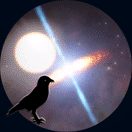 Star Engineer
Group: Local Moderators
 Germany
Germany
Messages: 1742
Status: Offline
| Quote ProtoJeb21 (  ) Because I though the universe wouldn't get any weirder, I decided to take a trip to the Kepler-296 binary star system. I was playing 0.9.7.3, and I found 6 planets orbiting the stars' BARYCENTER, NOT THE STARS. One of them was a FROZEN TERRA. I saw them, and was like, "I'm done."
In fact, it is an error which is caused by an overlap of old and new catalog files.
In the Archive file 'CatalogsSE.pak' there is a file 'ExoPlanets-unconfirmed.sc'. This still comes from SE 0.972.
There the 5 planets of Kepler-296/KOI-1422 were listed as unconfirmed.
With SE 0.973 the planets have been included in the official 'ExoPlanets.sc'.
If you go to Kepler-296 A, you can see the planets appear there again.

You may use the attached corrected file, it belongs to the folder 'catalogs\planets'. If the folder 'planets' does not exist, create it. Rename the file to 'ExoPlanets-unconfirmed.sc'
Don't forget to look here.

Edited by JackDole - Friday, 11.03.2016, 15:38 |
| |
| |
| JackDole | Date: Friday, 11.03.2016, 14:07 | Message # 476 |
 Star Engineer
Group: Local Moderators
 Germany
Germany
Messages: 1742
Status: Offline
| Quote DeathStar (  )
The planets orbiting the barycenter aren't weird at all, it's a mundanely regular occurrence in the real universe.
I am not sure if planets can actually orbit the barycenter between two stars in this way. I imagine that such orbits would be very unstable.
But I would be pleased if that were indeed possible. One of my handmade systems is constructed in this way.
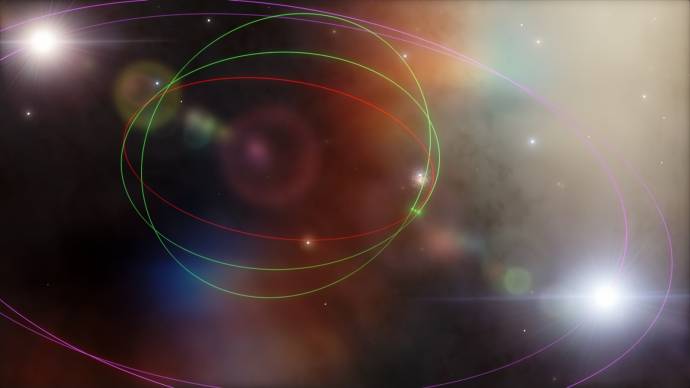
This is my attempt to recreate the system from the film Pitch Black.
Don't forget to look here.

|
| |
| |
| jkirchman | Date: Saturday, 12.03.2016, 00:55 | Message # 477 |
|
Observer
Group: Users
 Pirate
Pirate
Messages: 18
Status: Offline
| Edit: removed thumb to save space: H20 is common 
Edited by jkirchman - Saturday, 12.03.2016, 20:18 |
| |
| |
| Wicker1M | Date: Saturday, 12.03.2016, 17:22 | Message # 478 |
 Astronaut
Group: Users
 United States
United States
Messages: 57
Status: Offline
| CO2 H2O atmospheres are common in SpaceEngine, especially with deserts. Carbon dioxide and water vapor are common compounds in the universe.
|
| |
| |
| jkirchman | Date: Saturday, 12.03.2016, 20:15 | Message # 479 |
|
Observer
Group: Users
 Pirate
Pirate
Messages: 18
Status: Offline
| Quote Wicker1M (  ) CO2 H2O atmospheres are common in SpaceEngine, especially with deserts. Carbon dioxide and water vapor are common compounds in the universe.
OH. Lol I was excited. I'll take the post down, that's really interesting to know though O.o
|
| |
| |
| Someone | Date: Tuesday, 22.03.2016, 02:55 | Message # 480 |
|
Observer
Group: Newbies
 Indonesia
Indonesia
Messages: 5
Status: Offline
| Got some anomalous green moon.
http://imgur.com/a/EpMBd
|
| |
| |